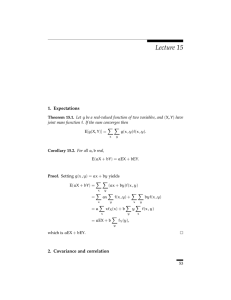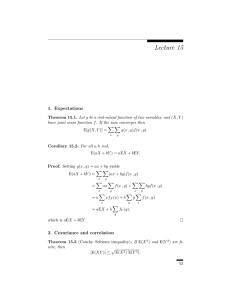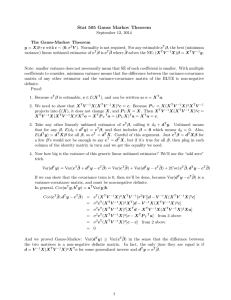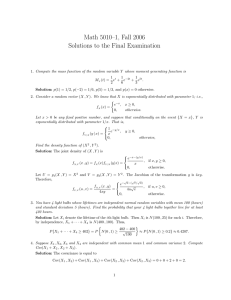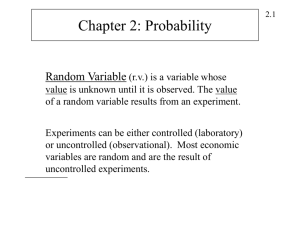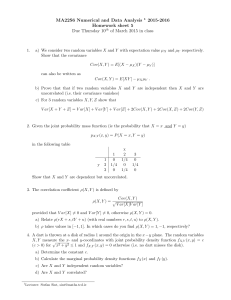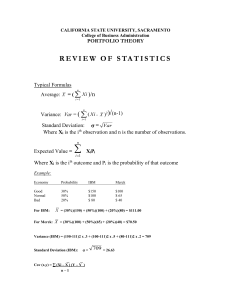Elementary statistics
advertisement
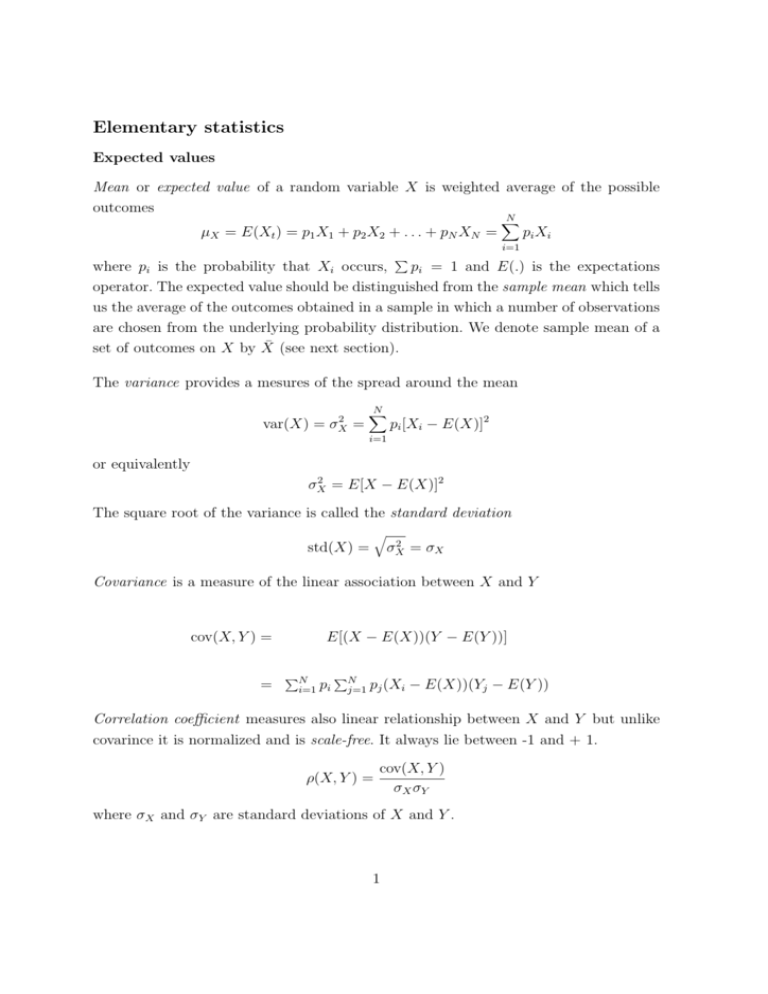
Elementary statistics Expected values Mean or expected value of a random variable X is weighted average of the possible outcomes µX = E(Xt ) = p1 X1 + p2 X2 + . . . + pN XN = P N X pi Xi i=1 where pi is the probability that Xi occurs, pi = 1 and E(.) is the expectations operator. The expected value should be distinguished from the sample mean which tells us the average of the outcomes obtained in a sample in which a number of observations are chosen from the underlying probability distribution. We denote sample mean of a set of outcomes on X by X̄ (see next section). The variance provides a mesures of the spread around the mean 2 var(X) = σX = N X pi [Xi − E(X)]2 i=1 or equivalently 2 σX = E[X − E(X)]2 The square root of the variance is called the standard deviation q std(X) = 2 σX = σX Covariance is a measure of the linear association between X and Y cov(X, Y ) = = E[(X − E(X))(Y − E(Y ))] PN i=1 pi PN j=1 pj (Xi − E(X))(Yj − E(Y )) Correlation coefficient measures also linear relationship between X and Y but unlike covarince it is normalized and is scale-free. It always lie between -1 and + 1. ρ(X, Y ) = cov(X, Y ) σX σY where σX and σY are standard deviations of X and Y . 1 Estimators of Mean, Variance and Covariance Usually, we make inferences about the above mentioned characteristics from the sample (we take a sample of N data points). We cannot know the true mean and variance of a random variable, or the true covariance between two random variables, we use the sample information to obtaing the best possible estimates. The estimator X̄ for random variable X with mean µX is defined by N 1 X Xi N i=1 X̄ = X̄ is a random variable whose values will vary from sample to sample even thought the corresponding (true mean) µX remains unchanged. The (unbiased) estimator for variance vd ar(X) = N 1 X (Xi − X̄)2 N − 1 i=1 The sample variance is distinguished from the true variance by placin a hat hat ( b ) above the cov. The (unbiased) estimator for covariance d cov(XY ) N 1 X (Xi − X̄)(Yj − Ȳ ) N − 1 i=1 The sample correlation coefficient is PN rXY = qP N i=1 (Xi i=1 (Xi or − X̄)(Yj − Ȳ ) − X̄)2 PN i=1 (Yi d cov(XY ) rXY = q vd ar(X)vd ar(Y ) 2 − Ȳ )2 Some useful properties of the expectations operators Rule 1 E(aX + b) = aE(X) + b where X is a random variable and a and b are constants Rule 2 E(aX)2 = a2 E(X 2 ) Rule 3 var(aX + b) = a2 var(X) Rule 4 If X and Y are random variables then E(X + Y ) = E(X) + E(Y ) Rule 5 var(X + Y ) = var(X) + var(Y ) + 2cov(X, Y ) Rule 6 If X and Y are independent then E(XY ) = E(X)E(Y ) Rule 7 If X and Y are independent then cov(XY ) = 0 References Pindyck, R. S., Rubinfeld, D. L. Econometric Models and Economic Forecasts, Irwin/McGrawHill, Fourth edition, 1998, Chapter 1 and 2, STM-126. 3


